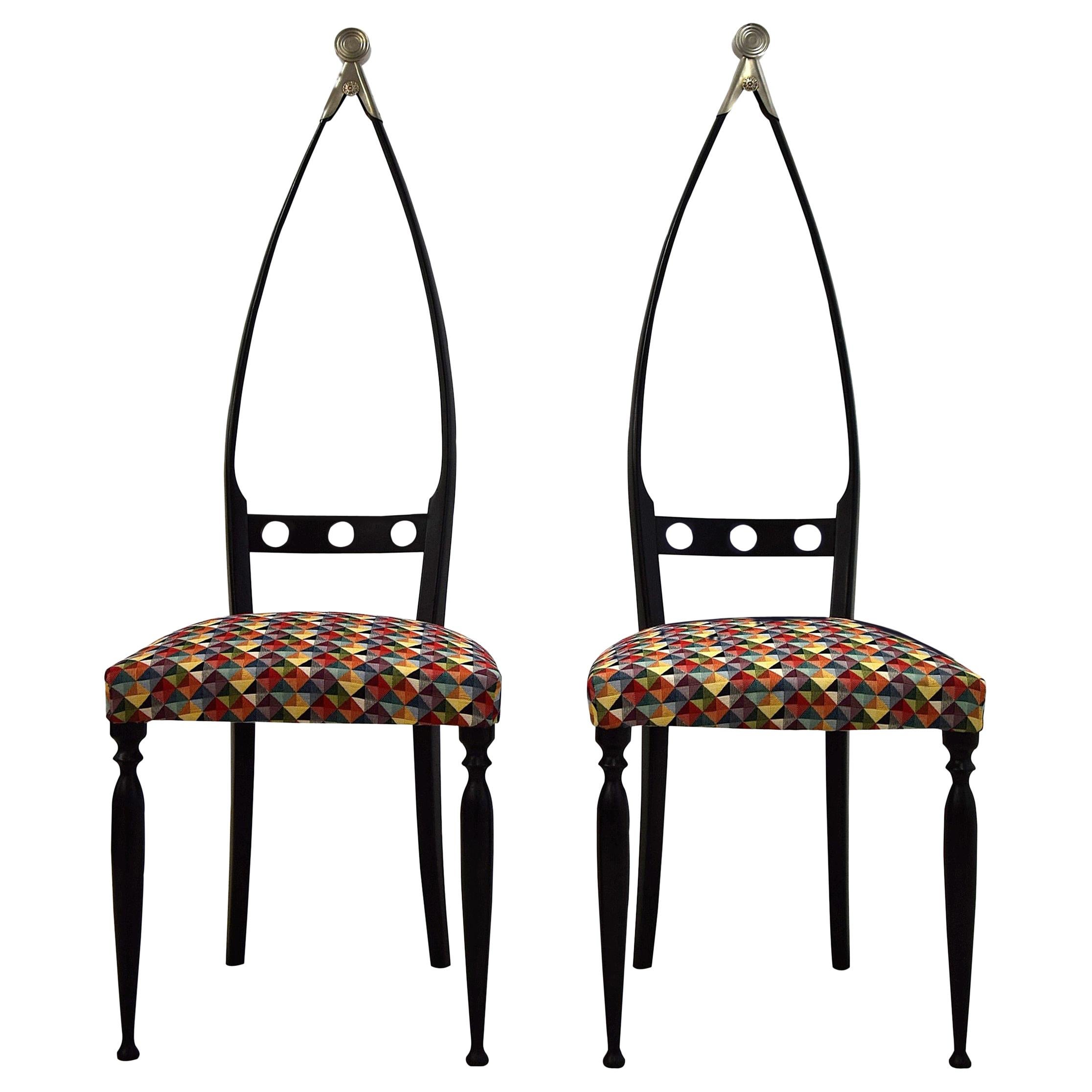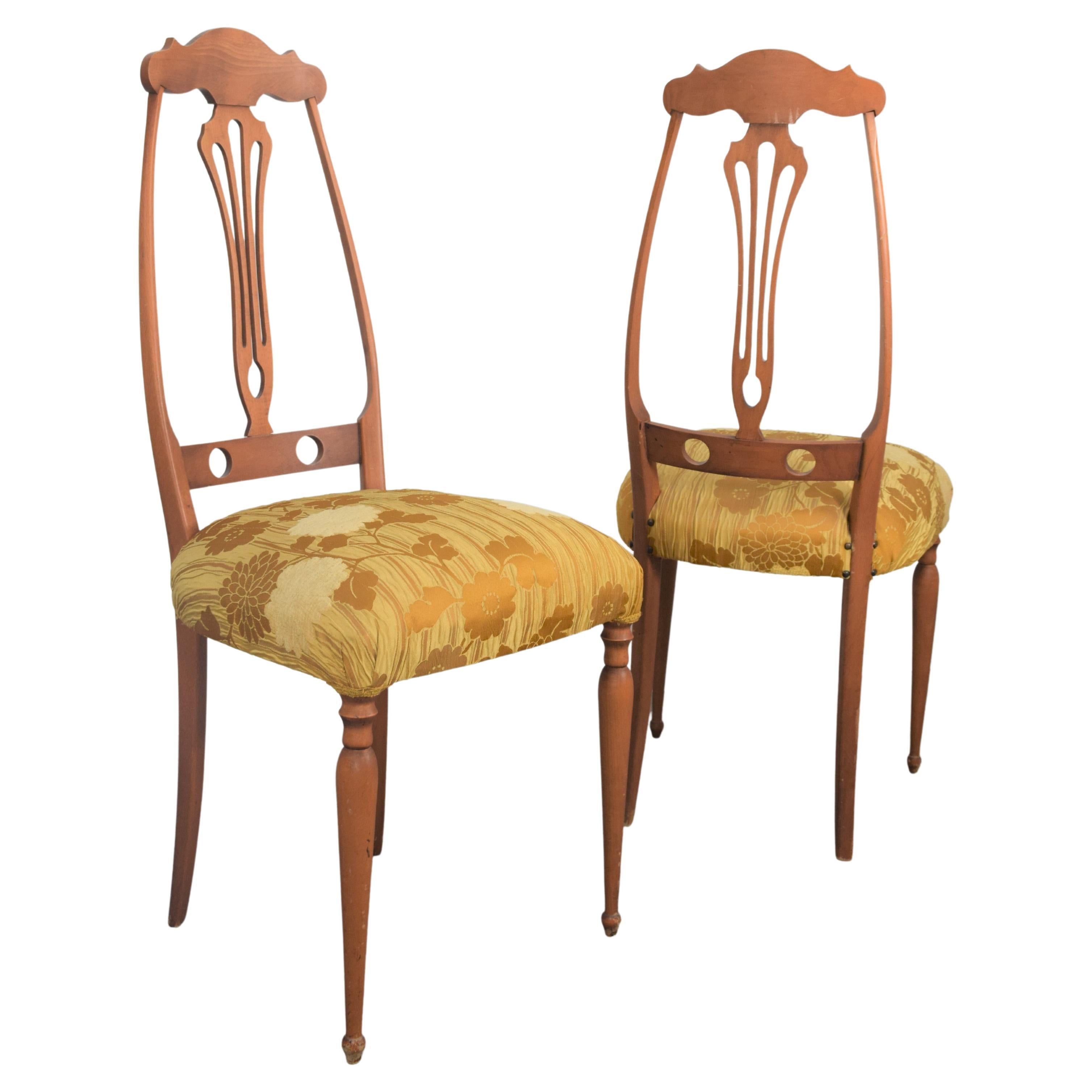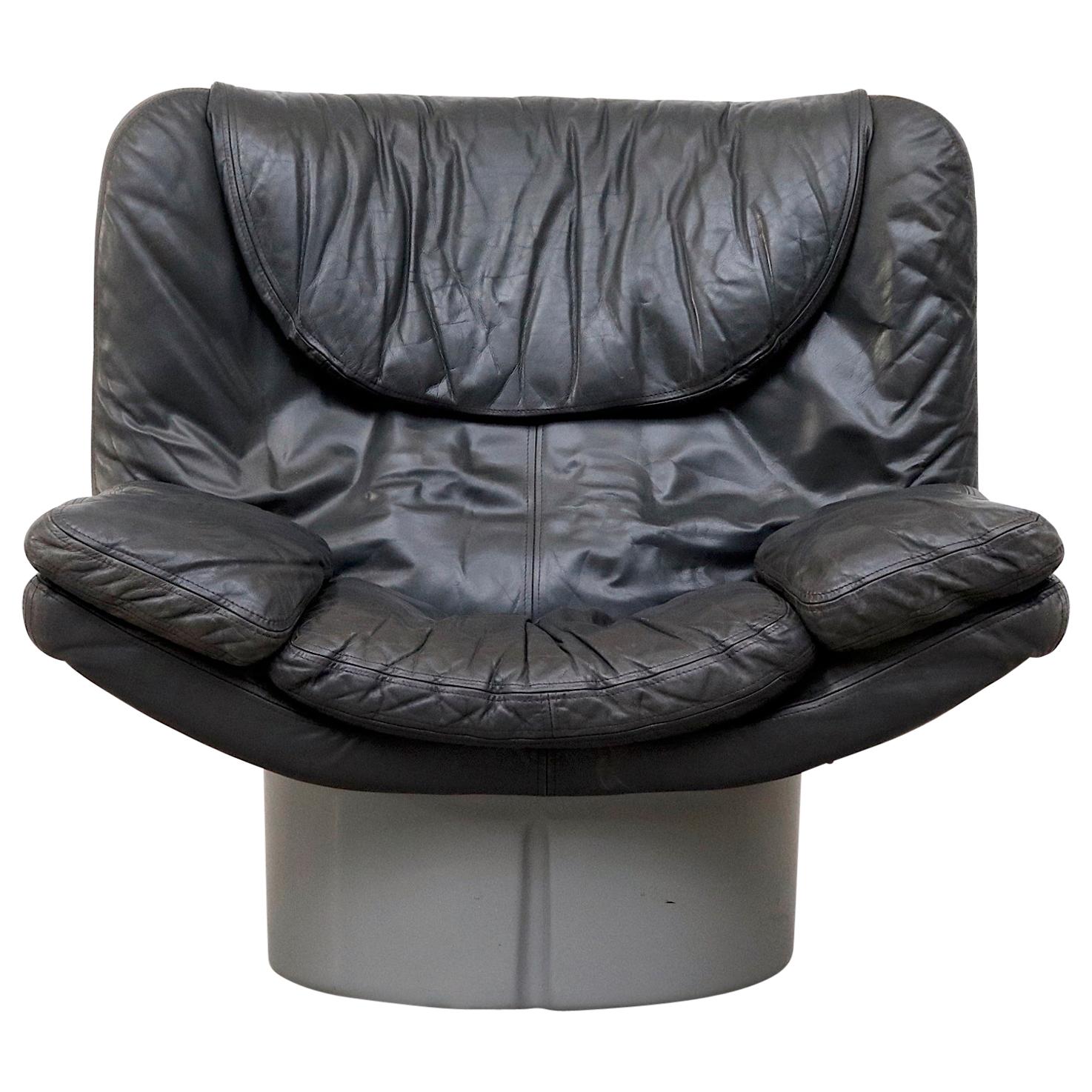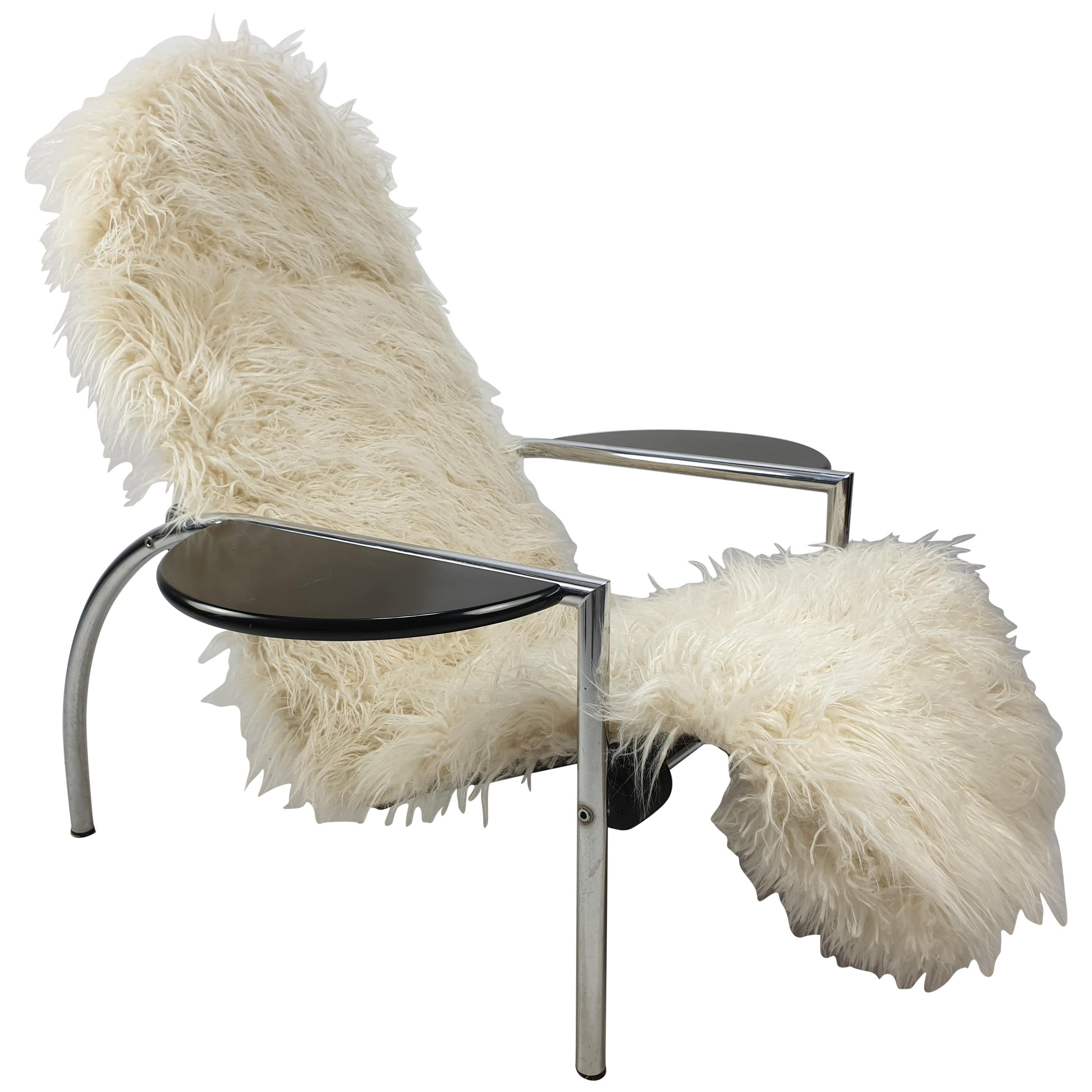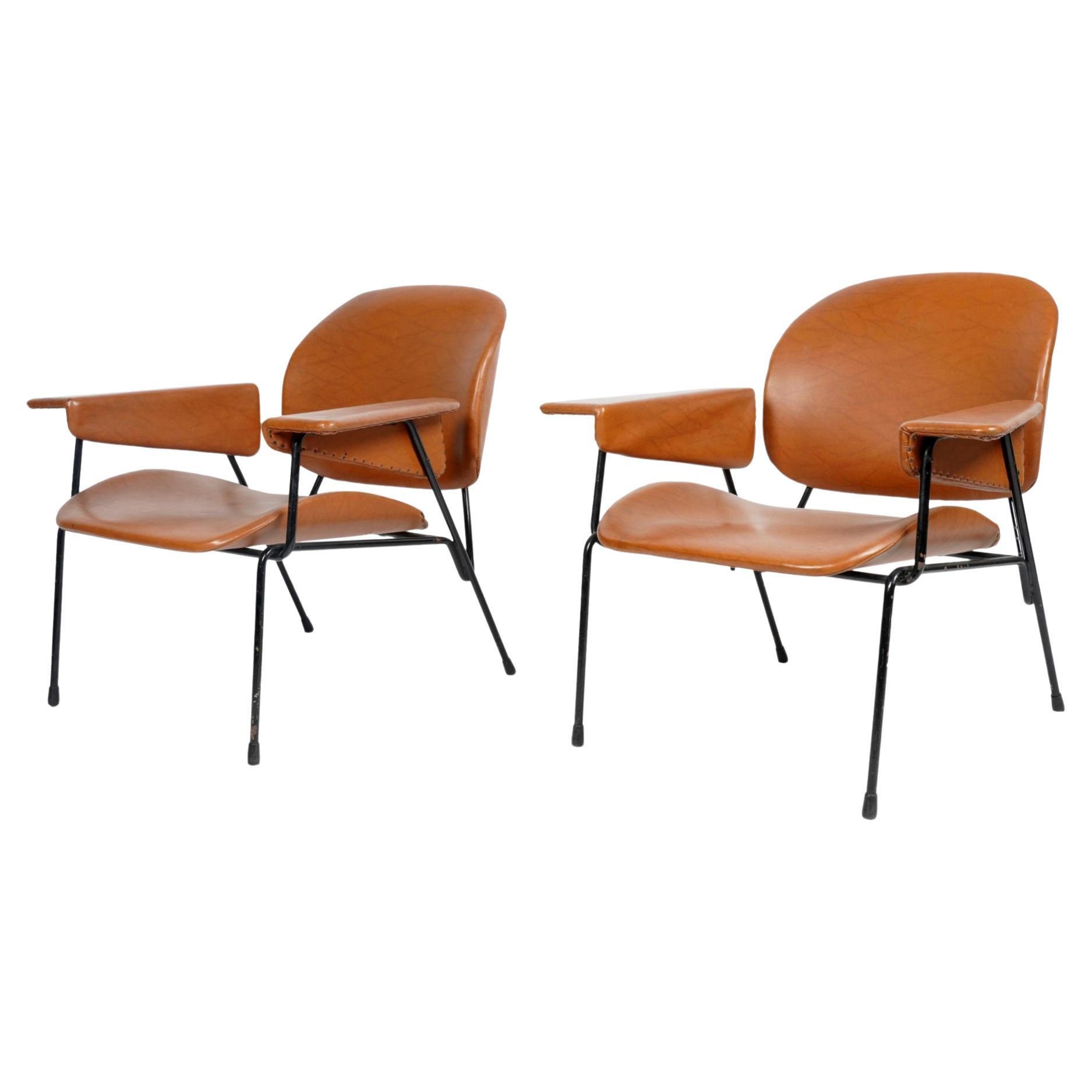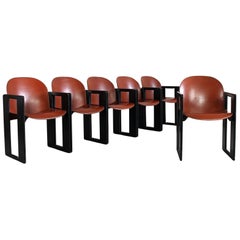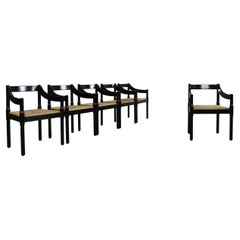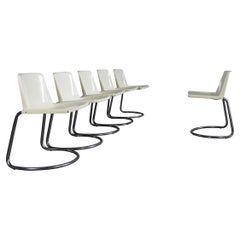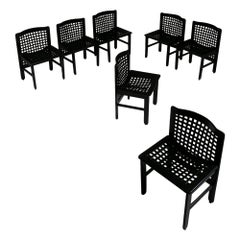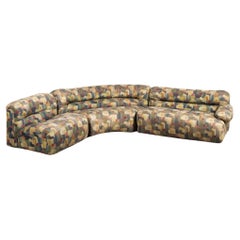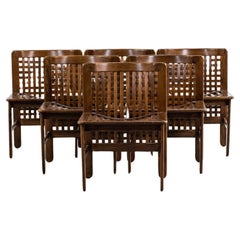
Titina Ammannati & Giampiero Vitelli Six Transenna Chairs By Pozzi And Verga 70s
View Similar Items
Want more images or videos?
Request additional images or videos from the seller
1 of 13
Titina Ammannati & Giampiero Vitelli Six Transenna Chairs By Pozzi And Verga 70s
About the Item
- Creator:Pozzi & Verga (Manufacturer),Titina Ammannati and Giampiero Vitelli (Designer)
- Dimensions:Height: 29.53 in (75 cm)Width: 21.26 in (54 cm)Depth: 16.93 in (43 cm)
- Sold As:Set of 6
- Style:Mid-Century Modern (Of the Period)
- Materials and Techniques:Wood,Other
- Place of Origin:
- Period:
- Date of Manufacture:1970s
- Condition:Wear consistent with age and use.
- Seller Location:Montecatini Terme, IT
- Reference Number:1stDibs: LU5304236655062
About the Seller
4.9
Gold Seller
These expertly vetted sellers are highly rated and consistently exceed customer expectations.
1stDibs seller since 2020
102 sales on 1stDibs
More From This SellerView All
- Tobia & Afra Scarpa Set of Six Dialogo Chairs in Leather and Wood by B&B 1970sBy Afra & Tobia Scarpa, B&B ItaliaLocated in Montecatini Terme, ITSet of six Dialogo chairs with structure in black lacquered wood, seat and back in leather and metal details. Designed by Tobia & Afra Scarpa and produced by B&B Italia in 1970s Th...Category
Vintage 1970s Italian Mid-Century Modern Chairs
MaterialsLeather, Wood
- Vico Magistretti Set of Six Black Carimate Chairs by Cassina 1960sBy Cassina, Vico MagistrettiLocated in Montecatini Terme, ITSet of six Carimate chairs with structure in black lacquered beech wood and woven straw seat, designed by Vico Magistretti and produced by Cassina in the 1960s. The Carimate chair ...Category
Vintage 1960s Italian Mid-Century Modern Chairs
MaterialsStraw, Beech
- Giotto Stoppino Set of Six White Alessia Chairs by Driade 1970s ItalyBy Giotto Stoppino, DriadeLocated in Montecatini Terme, ITSet of six Alessia chairs with legs in tubular chromed metal and seats in white ABS, designed by Giotto Stoppino and manufactured by Driade in the 1970s. (Manufacturer's brand visi...Category
Vintage 1970s Italian Mid-Century Modern Chairs
MaterialsMetal
$2,269 Sale Price / set20% Off - Set of Six Dining Chairs in Wood by Sineo Gemignani Italian Manufacture 1940sBy Sineo GemignaniLocated in Montecatini Terme, ITA very rare set of six dining chairs entirely made in curved wood, this set was designed by the Italian artist Sineo Gemignani and manufactured in Ital...Category
Vintage 1940s Italian Mid-Century Modern Chairs
MaterialsWood
- Luigi Caccia Dominioni Set of Six Catilina Chairs in Steel and Fabric AzucenaBy Luigi Caccia Dominioni, AzucenaLocated in Montecatini Terme, ITSet of six Catilina chairs with frame in painted steel, seat top in multi-layered wood, and upholstery-shaped polyurethane cushions covered with red fabric. This iconic seat was designed by Luigi Caccia Dominioni, and produced by Azucena since 1958. Luigi Caccia Dominioni firstly presents this seat at the XI Triennale in Milan in 1957 and from this moment Catilina became one of Luigi Caccia Dominioni’s classics. Caccia Dominioni created a new chair and also defined how to sit in it. Catilina is not designed for relaxation and letting go but for thoughtfulness and elegance. You could almost be transported back to ancient Rome ensconced in the seat of the Roman senator, Lucio Sergio Catilina, after whom the chair is named. In turn, the chair harks back to medieval thrones...Category
Vintage 1950s Italian Mid-Century Modern Club Chairs
MaterialsSteel
- Mario Botta Set of Six 605 Quinta Chairs in Black Lacquered Steel by Alias 1980By Alias, Mario BottaLocated in Montecatini Terme, ITSet of six 605 Quinta chairs with a black steel rod frame seat and back in bent perforated sheet metal. Designed by Mario Botta for Alias in 1985 (This chair is no longer in production). The Quinta chair it's an architecture you can sit on, this design clearly shows the inspiration of iconic designer as Le Corbusier, Louis Kahn, and Carlo Scarpa, an exemplary of this iconic chair is also exhibited at the Museum of Modern Art. Mario Botta was born in 1943 in Mendrisio. After working as an apprentice draughtsman for the Lugano-based architect Tita Carloni, he moved first to Milan and then to Venice, where he enrolled at the department of Architecture at the IUAV. He completed his degree in 1969 with a thesis tutored by Carlo Scarpa – after having met Le Corbusier and Louis Kahn, who were later to be sources of inspiration – and returned to Switzerland to open his own professional firm, which at the time dealt mainly with detached family private homes. These included the villas in Riva San Vitale (1971-1973), Ligornetto (1975-1976) and Morbio Superiore (1982-1983), in which Botta treated the theme of the home as a refuge, which protects and reassures its inhabitants. These were buildings with a character that was ironic and, in a certain sense, monumental, obtained for example (in the case of Morbio) through rigorous symmetrical compositions and a particular use of raw concrete blocks set in a linear pattern and alternated with strips of silvered brick which, on the contrary, were set at 45 degrees. Partially dug into the hillside, the villa was also characterised by a theme which was particularly dear to Botta and which had already been explored in Riva San Vitale; the net distinction between solids and voids, the latter appearing to have been dug out of the building. Between 1980 and 1990, Botta associated with artists and intellectuals from all walks of life and took numerous long trips abroad. Together with Gabriele Basilico and Edoardo Sanguinetti, he published “La Casa Rotonda”, and he became friends with Max Huber, Nicki de Saint Phalle, Dante Isella, Harld Szeemann, Robert Frank and Alberto Flammer. In 1986, the MoMA in New York dedicated a solo exhibition to his work, and the Swiss architect received his first contracts for public buildings and from abroad, debuting with the Cultural Centre in Chambéry (1984-1987). In Japan, on a challenging triangular lot of only one hundred and sixty square metres, a space which remained from the opening of a new highway, Botta built a small building which, with its clarity and strength of image, attempted to stand out in the midst of the chaos that surrounded it, thanks to a thick masonry curtain raised on the main façade, in which slabs of grey marble are crossed with horizontal fissures which erode the angles and cancel the perception of the number of floors which make up the museum. The church of Mongo, on the other hand, was the first step in a long series of places of worship, including designs for the churches of Pordenone (1987-1992) and Sartiana (1987-1995), for the cathedral of Evry (1988-1995), for the basilica of Santa Maria degli Angeli on Mont Tamaro (1990-1996, for the Giovanni XXII church in Seriate (1994-2000) and for the Cymbalista synagogue in Tel Aviv (1996-1998). In each of these, light plays a predominant role as a prime generator of space and a measure for the definition of time that passes with the various phases of the day, the months and the seasons. Light is, however, the main symbolic element, representing through its variations the uneasiness of humankind in the face of divine perfection. In this same period, the scheduling for the construction of a new School of Architecture, the Mendrisio Academy, took place. Inaugurated in 1996, it offered an alternative approach to teaching in contrast to the Swiss University system, in which an important role is played by humanistic subjects and by a copious group of well-known international professors: from Rykwert to Benevolo, Burkhart, Campos Baeza, Dal Co, Frampton, Mendes da Rocha...Category
Vintage 1980s Italian Post-Modern Chairs
MaterialsSteel, Sheet Metal
You May Also Like
- Set of 7 "Transenna" Dining Chairs by Ammannati and Vitelli for Pozzi & VergaBy Pozzi & Verga, Titina Ammannati and Giampiero VitelliLocated in Milan, ITSet of seven Transenna chairs by Titina Ammannati and Giampiero Vitelli for Pozzi and Verga. Sturdy seating with wood plot backrest.Category
Vintage 1980s Italian Chairs
MaterialsWood
- 1970s Stringa 3-Piece Sofa by Titina Ammannati & Giampiero VitelliBy Titina Ammannati and Giampiero VitelliLocated in Toronto, CAThis Italian mega couch by Titina Ammannati & Giampiero Vitelli, with curved center piece and ample seats, boasts its original 1970s printed upholstery. Italian design by Comfort Med...Category
Vintage 1970s Italian Post-Modern Sofas
MaterialsSteel
- Pair of Soften Armchairs by Titina Ammannati and Giampiero Vitelli, Italy 1970sBy Titina Ammannati and Giampiero Vitelli, Giuseppe Rossi di AlbizzateLocated in Torino, PiemontePair of Soften armchairs by Titina Ammannati and Giampiero Vitelli for Rossi di Albizzate, Italy 1970s, completely restored and reupholstered in Hèrmes velvet.Category
Mid-20th Century Italian Mid-Century Modern Armchairs
MaterialsVelvet
- Mid-Century Modern Chairs by Pozzi and VergaBy Pozzi & VergaLocated in Weesp, NLPozzi and Verga Mid-Century Modern chairs. Beautiful sculptural black lacquered mid-century chairs by Pozzi e Verga, Italy. The chairs are in great condition and have been reupholste...Category
Vintage 1950s Italian Mid-Century Modern Chairs
MaterialsFabric, Wood
$6,546 / set - Pair of Italian Chairs by Pozzi & Verga, 1950sBy Pozzi & VergaLocated in Palermo, PAPair of Italian chairs by Pozzi & Verga, 1950s. Dimensions: H= 101 cm; W= 44 cm; D=42 cm; H seat= 48 cm.Category
Vintage 1950s Italian Mid-Century Modern Chairs
MaterialsWood
- 1950s by Pozzi and Verga Italian Design Midcentury Pair of ChairsBy Pozzi & VergaLocated in Brescia, ITRare brass chairs Red velvet upholstery Excellent condition.Category
Vintage 1950s Italian Mid-Century Modern Chairs
MaterialsBrass
Recently Viewed
View AllMore Ways To Browse
Hickory Rattan Chair
Ikea 70s
La Z Boy Vintage
Louis XVI Animal Skin Chairs
Lucite Shell Chair
Marcel Breuer B33 Chairs
Marcel Breuer B33
Mart Stam S33
Mcm Wicker Chairs
Miller Armless
Ombre Chair
Parigi Chair
Perfect Bachelor Chairs
Perriand Dordogne 1960
Regina Chair
Stam S33
Swiss Natural Fiber Chairs
Thonet Cane Chrome Chair



